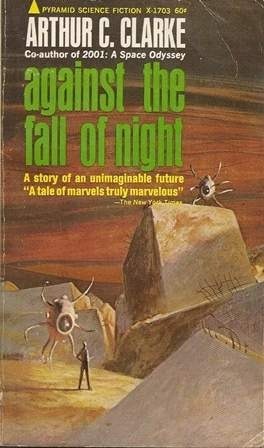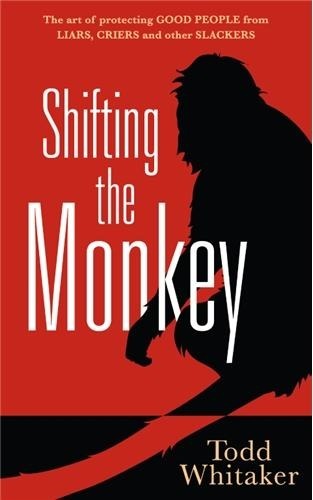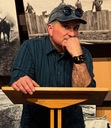Phil Giunta's Blog, page 85
January 10, 2014
By Your Side Concludes on Audio
The final audio chapter of By Your Side is now available. If you tuned in since the beginning, or even jumped in somewhere in the middle, I thank you and hope that you enjoyed listening to the story as much as I did writing and recording it.
By Your Side is available in trade paperback and eBook formats from Amazon , Barnes and Noble , Kobo , and almost all online book sellers on the planet. In fact, as of today, By Your Side ranks #518 in the Fiction & Literature\Ghost category on Kobo. Not bad for a newbie!
Click here to listen to the conclusion!

By Your Side is available in trade paperback and eBook formats from Amazon , Barnes and Noble , Kobo , and almost all online book sellers on the planet. In fact, as of today, By Your Side ranks #518 in the Fiction & Literature\Ghost category on Kobo. Not bad for a newbie!
Click here to listen to the conclusion!

Published on January 10, 2014 19:28
Calling All Writers: Do You Have the Write Stuff?
I will be speaking at two sessions of the Write Stuff writers conference in Allentown, PA on Saturday, March 22:
8:50AM - 9:40AM: "The Difference Between Writing Novels and Short Stories" - Short stories must "hit the beats" much faster than novels. We'll examine such differences as character development and POV, time frame, plotting, and pacing.
11AM - 11:50AM: "Time Management for Writers" - We'll discuss methods for carving out time for writing and other productive uses for your writing time if you can't get the words out.
I will also be a panelist at the Friday night critique session, Page Cuts, from 6:30PM - 8:30PM.
There are 19 interactive sessions with industry leading authors, editors and agents including Hank Phillipi Ryan, Scott Nicholson, Mary Shafer, Kathryn Craft, Don Lafferty, and more. I find myself in august company to be sure!
Click here for more information on this fun and educational conference sponsored by the Greater Lehigh Valley Writers Group .
8:50AM - 9:40AM: "The Difference Between Writing Novels and Short Stories" - Short stories must "hit the beats" much faster than novels. We'll examine such differences as character development and POV, time frame, plotting, and pacing.
11AM - 11:50AM: "Time Management for Writers" - We'll discuss methods for carving out time for writing and other productive uses for your writing time if you can't get the words out.
I will also be a panelist at the Friday night critique session, Page Cuts, from 6:30PM - 8:30PM.
There are 19 interactive sessions with industry leading authors, editors and agents including Hank Phillipi Ryan, Scott Nicholson, Mary Shafer, Kathryn Craft, Don Lafferty, and more. I find myself in august company to be sure!
Click here for more information on this fun and educational conference sponsored by the Greater Lehigh Valley Writers Group .
Published on January 10, 2014 18:32
Time Management for Writers
I will be speaking about "Time Management for Writers" at the January meeting of the Brandywine Valley Writers Group in West Chester.
Date: Tuesday, January 21
Time: Approximately 7PM
Location: Ryan's Pub (second floor), 124 West Gay Street, West Chester, PA 19380
Click here for more information

Date: Tuesday, January 21
Time: Approximately 7PM
Location: Ryan's Pub (second floor), 124 West Gay Street, West Chester, PA 19380
Click here for more information

Published on January 10, 2014 17:09
January 6, 2014
BY YOUR SIDE Continues on Audio with Chapters 17 and 18!
And we're back after the holidays with two more chilling audio chapters of
By Your Side
!
Chapter Seventeen – Last Dance
Jeff Vernon battles his wife to stop her from murdering Matt. Meanwhile, the Vernon girls lead Miranda to Adam. She persuades him to come back with her and help convince his mother to leave the Meade family in peace. Before crossing over, Nancy tries to claim a final victim.
Chapter Eighteen – Pancakes
After a night in the hospital, Miranda is visited in her hotel room by a grateful Adam Vernon. Meanwhile, romance sparks between Amy and Eddie.
Click here to listen to Chapter 17
Click here to listen to Chapter 18

Chapter Seventeen – Last Dance
Jeff Vernon battles his wife to stop her from murdering Matt. Meanwhile, the Vernon girls lead Miranda to Adam. She persuades him to come back with her and help convince his mother to leave the Meade family in peace. Before crossing over, Nancy tries to claim a final victim.
Chapter Eighteen – Pancakes
After a night in the hospital, Miranda is visited in her hotel room by a grateful Adam Vernon. Meanwhile, romance sparks between Amy and Eddie.
Click here to listen to Chapter 17
Click here to listen to Chapter 18

Published on January 06, 2014 16:13
December 25, 2013
Book Review: Against the Fall of Night by Arthur C. Clarke
Millions of years in the future, only two territories remain on Earth, separated by a vast desert that had once been an ocean. Diaspar, the city into which so many other major metropolises had been absorbed throughout the ages, is populated by a nearly immortal race of humans whose intellectual curiosity and ambition has stultified and been replaced by decadence and fear. For the citizens of Diaspar care not what lies beyond the city's walls. That is, all but Alvin, the first child born in Diaspar in seven thousand years.
Alvin's tutor, the much elder Jeserac, reveals to him the vast history of humanity. Mankind had once reached beyond the stars until they found themselves at war with the Invaders. Swiftly defeated, humans agreed never to leave their home planet again or risk the wrath of the Invaders once more. As such, the people of Diaspar have been content to remain within the confines not only of Earth, but of their city.
Filled with an explorer's spirit, however, Alvin seeks a way out of Diaspar. He travels to the Tower of Loranne which overlooks the vast desert that, supposedly, is all that remains of Earth. There, Alvin finds a mysterious inscription that leads him to inquire with Rorden, the Keeper of Records. Hesitant at first to help Alvin in his quest to leave the city, Rorden nonetheless begins researching the inscription which then leads the pair on an expedition to discover secrets hidden below the surface of Diaspar, including an ancient transportation system and map showing all of the cities of Earth, long ago claimed by the desert. That is, all but one called Lys, the only other surviving territory.
A supersonic rail car still in operation takes Alvin to Lys where he discovers a race of mortal humans with highly developed telepathic abilities living in rural paradise. While there, Alvin meets Theon and his mother Seranis. While they are gracious hosts, Seranis warns Alvin that he has only two options now. Either stay on Lys for the rest of his life, or submit to a memory wipe if he chooses to return to Diaspar. The people of Lys do not wish to risk cultural contamination.
However, Seranis takes pity on Alvin and asks that she be allowed five days to work out another solution with the Council. During that time, Alvin and Theon become fast friends and decide to explore parts of Lys in which no one has set foot in recent memory. Their adventures lead them to unlock even more secrets about Earth's past. Bolstered by new knowledge and resources gained as a result, Alvin escapes Lys and returns to Diaspar where he recruits Rorden on a quest to reunite Lys and Diaspar...a quest which leads to the ultimate truth of humanity's history and paves the way to the future.
While the theme of the story is not entirely original (individual rebels against stagnant society), Clarke presents a well-developed and intellectual journey of the indomitable human spirit. As usual in such tales, our protagonist is aided in his mission by an elder, wiser mentor (Rorden) and a young contemporary (Theon). Albeit, Alvin seems quite independent and recalcitrant at times without any encouragement or assistance.
All told, Against the Fall of Night is reminiscent of a Heinlein juvenile novel. A fun read!

Alvin's tutor, the much elder Jeserac, reveals to him the vast history of humanity. Mankind had once reached beyond the stars until they found themselves at war with the Invaders. Swiftly defeated, humans agreed never to leave their home planet again or risk the wrath of the Invaders once more. As such, the people of Diaspar have been content to remain within the confines not only of Earth, but of their city.
Filled with an explorer's spirit, however, Alvin seeks a way out of Diaspar. He travels to the Tower of Loranne which overlooks the vast desert that, supposedly, is all that remains of Earth. There, Alvin finds a mysterious inscription that leads him to inquire with Rorden, the Keeper of Records. Hesitant at first to help Alvin in his quest to leave the city, Rorden nonetheless begins researching the inscription which then leads the pair on an expedition to discover secrets hidden below the surface of Diaspar, including an ancient transportation system and map showing all of the cities of Earth, long ago claimed by the desert. That is, all but one called Lys, the only other surviving territory.
A supersonic rail car still in operation takes Alvin to Lys where he discovers a race of mortal humans with highly developed telepathic abilities living in rural paradise. While there, Alvin meets Theon and his mother Seranis. While they are gracious hosts, Seranis warns Alvin that he has only two options now. Either stay on Lys for the rest of his life, or submit to a memory wipe if he chooses to return to Diaspar. The people of Lys do not wish to risk cultural contamination.
However, Seranis takes pity on Alvin and asks that she be allowed five days to work out another solution with the Council. During that time, Alvin and Theon become fast friends and decide to explore parts of Lys in which no one has set foot in recent memory. Their adventures lead them to unlock even more secrets about Earth's past. Bolstered by new knowledge and resources gained as a result, Alvin escapes Lys and returns to Diaspar where he recruits Rorden on a quest to reunite Lys and Diaspar...a quest which leads to the ultimate truth of humanity's history and paves the way to the future.
While the theme of the story is not entirely original (individual rebels against stagnant society), Clarke presents a well-developed and intellectual journey of the indomitable human spirit. As usual in such tales, our protagonist is aided in his mission by an elder, wiser mentor (Rorden) and a young contemporary (Theon). Albeit, Alvin seems quite independent and recalcitrant at times without any encouragement or assistance.
All told, Against the Fall of Night is reminiscent of a Heinlein juvenile novel. A fun read!

Published on December 25, 2013 18:43
December 23, 2013
About This Writing Stuff...
Starting off the new year, Joe Konrath announces his predictions for the publishing industry in 2014. Michele Filgate focuses on the writer's propensity for self-loathing and how to address it. Michael Rosenwald examines the rise of the indie bookstore while David Corbett discusses character building through the use of secrets and contradictions. From the Write Practice, we get tips on perfect first lines and first pages. Robyn LaRue reveals key lessons learned from writing novels and offers advice on setting writing goals in the new year.
All that and a little more. Enjoy and Happy New Year!
Publishing a Book Won't Change Your Life (At Least Not The Way You Think) by Jill Di Donato
Literary Self-Loathing: How Jonathan Franzen, Elizabeth Gilbert, and More Keep it at Bay by Michele Filgate
Secrets and Contradictions by David Corbett
Independent Bookstores Turn a New Page on Brick-and-Mortar Retailing by Michael S. Rosenwald
10 Lessons I Learned from My Novels and 7 Tips for Setting Achievable Writing Goals in 2014 by Robyn LaRue
Konrath's Publishing Predictions 2014 by Joe Konrath
7 Keys to Write the Perfect First Line of a Novel by Joe Bunting
How to Write the Perfect First Page by Monica M. Clark
Brain Function 'Boosted for Days After Reading a Novel' by Tomas Jivanda
All that and a little more. Enjoy and Happy New Year!
Publishing a Book Won't Change Your Life (At Least Not The Way You Think) by Jill Di Donato
Literary Self-Loathing: How Jonathan Franzen, Elizabeth Gilbert, and More Keep it at Bay by Michele Filgate
Secrets and Contradictions by David Corbett
Independent Bookstores Turn a New Page on Brick-and-Mortar Retailing by Michael S. Rosenwald
10 Lessons I Learned from My Novels and 7 Tips for Setting Achievable Writing Goals in 2014 by Robyn LaRue
Konrath's Publishing Predictions 2014 by Joe Konrath
7 Keys to Write the Perfect First Line of a Novel by Joe Bunting
How to Write the Perfect First Page by Monica M. Clark
Brain Function 'Boosted for Days After Reading a Novel' by Tomas Jivanda
Published on December 23, 2013 13:35
December 16, 2013
BY YOUR SIDE Continues on Audio with Chapter 16!
For your FREE listening pleasure, we near the climactic final chapters of BY YOUR SIDE!
Chapter Sixteen – A Child for a Child
Possessed by Nancy Vernon, April Meade leads Miranda on a near fatal chase into traffic. Leaving April's broken body, Nancy attacks Robert, then goes after their son, Matt. Colin appears to Miranda and urges her to fight for the boy who would otherwise die alone.
Click here to listen!

Chapter Sixteen – A Child for a Child
Possessed by Nancy Vernon, April Meade leads Miranda on a near fatal chase into traffic. Leaving April's broken body, Nancy attacks Robert, then goes after their son, Matt. Colin appears to Miranda and urges her to fight for the boy who would otherwise die alone.
Click here to listen!

Published on December 16, 2013 17:56
December 8, 2013
BY YOUR SIDE Continues on Audio!
The latest episode of my paranormal thriller, By Your Side, is available now for your FREE listening pleasure!
Chapter Fifteen – Last on the List
Desperate for answers, Denny calls Miranda to Gray’s house to test her psychic-medium abilities. The Vernon girls tip off Miranda as to their mother’s final victim.
Click here to listen!

Chapter Fifteen – Last on the List
Desperate for answers, Denny calls Miranda to Gray’s house to test her psychic-medium abilities. The Vernon girls tip off Miranda as to their mother’s final victim.
Click here to listen!

Published on December 08, 2013 08:06
Book Review: Shifting the Monkey by Todd Whitaker
Indiana State University professor Todd Whitaker takes a humorous and insightful approach to handling slackers in the workplace using the old metaphor of "monkey on the back". Essentially, when poor performing employees force their peers or managers to take up their slack, or provide poor customer service, they are essentially "shifting the monkey" of responsibility off themselves.
Whitaker condenses his message down to three principles:
Where is the monkey?
Where should the monkey be?
How do I shift the monkey to its proper place?
The book details specific examples and tactics that managers can use to deal with bad employees ranging from criers and liars to complainers, from those that always have a ready excuse for their failures to those who are simply apathetic. The workplace is replete with "monkeys" of all types and some, such as Guilt Monkeys, Fear Monkeys, Worry Monkeys, and Punishment Monkeys, are not the best management approaches for dealing with bad employees.
Whitaker's scenarios reach beyond the office environment, however. It extends to service organizations, department stores, restaurants and any business that employs a staff large enough to contain a few miscreants. Shifting the Monkey details methods for putting the responsibility and accountability back where it belongs onto the bad employees, thereby allowing them to either improve their performance or continue on the path to eventual termination.
Poor management decisions and blanket policies intended to address problem customers and employees can also place unnecessary "monkeys on the backs" of valuable customers and solid employees, the results of which could easily inflict even more damage to the company through loss of business and heavy turnover.
While some of the examples cited in the book may seem simplistic, they can be adapted to just about any given business situation and further, into your personal life. How many family members or friends are constant liars, criers, complainers, or slackers? We all know them and Whitaker provides a set of transformative tools for dealing with them.

Whitaker condenses his message down to three principles:
Where is the monkey?
Where should the monkey be?
How do I shift the monkey to its proper place?
The book details specific examples and tactics that managers can use to deal with bad employees ranging from criers and liars to complainers, from those that always have a ready excuse for their failures to those who are simply apathetic. The workplace is replete with "monkeys" of all types and some, such as Guilt Monkeys, Fear Monkeys, Worry Monkeys, and Punishment Monkeys, are not the best management approaches for dealing with bad employees.
Whitaker's scenarios reach beyond the office environment, however. It extends to service organizations, department stores, restaurants and any business that employs a staff large enough to contain a few miscreants. Shifting the Monkey details methods for putting the responsibility and accountability back where it belongs onto the bad employees, thereby allowing them to either improve their performance or continue on the path to eventual termination.
Poor management decisions and blanket policies intended to address problem customers and employees can also place unnecessary "monkeys on the backs" of valuable customers and solid employees, the results of which could easily inflict even more damage to the company through loss of business and heavy turnover.
While some of the examples cited in the book may seem simplistic, they can be adapted to just about any given business situation and further, into your personal life. How many family members or friends are constant liars, criers, complainers, or slackers? We all know them and Whitaker provides a set of transformative tools for dealing with them.

Published on December 08, 2013 06:27
December 3, 2013
About This Writing Stuff...
This week, social scientist Dana Beth Weinberg examines the data from the Digital Book World/Writers Digest 2013 survey to determine the motivations, productivity, and income potential of each major method of publishing (self, hybrid, and tradtional). I found this to be a fascinating study. James Scott Bell sites some of the findings from this survey in his article regarding self-publishing income. Jessica Bennett offers insights about self-publishing from her experience as a book reviewer while Allison Winn Scotch talks about her plunge into DIY publishing.
On the craft side, Donald Maass imparts excellent advice on weaving your characters' backgrounds into the fabric of your story. Jodie Renner goes deep into scenes and if you think you have a book series in you, Ann Greenwood Brown provides sagacious advice on how to proceed. All that, and a little more...enjoy!
Out of Print, Maybe, but Not Out of Mind by David Streitfeld
E-books Can't Burn by Tim Parks
Self-Publishing Debate: A Social Scientist Separates Fact from Fiction Part One , Part Two , Part Three by Dana Beth Weinberg
10 Ways to Add Depth to Your Scenes by Jodie Renner
10 Things I Learned from Evaluating Self-Published Books for a Year by Jessica Bennett
Practical Tips for Writing a Series by Ann Greenwood Brown
The Red Roadmaster by Donald Maass
How Much Money is in the Self-Publishing Game? by James Scott Bell
A Brave New World: Let's Do This by Allison Winn Scotch
The Seven Stages You Pass to Become a Writer by Ani Chibukhchyan
On the craft side, Donald Maass imparts excellent advice on weaving your characters' backgrounds into the fabric of your story. Jodie Renner goes deep into scenes and if you think you have a book series in you, Ann Greenwood Brown provides sagacious advice on how to proceed. All that, and a little more...enjoy!
Out of Print, Maybe, but Not Out of Mind by David Streitfeld
E-books Can't Burn by Tim Parks
Self-Publishing Debate: A Social Scientist Separates Fact from Fiction Part One , Part Two , Part Three by Dana Beth Weinberg
10 Ways to Add Depth to Your Scenes by Jodie Renner
10 Things I Learned from Evaluating Self-Published Books for a Year by Jessica Bennett
Practical Tips for Writing a Series by Ann Greenwood Brown
The Red Roadmaster by Donald Maass
How Much Money is in the Self-Publishing Game? by James Scott Bell
A Brave New World: Let's Do This by Allison Winn Scotch
The Seven Stages You Pass to Become a Writer by Ani Chibukhchyan
Published on December 03, 2013 15:39



